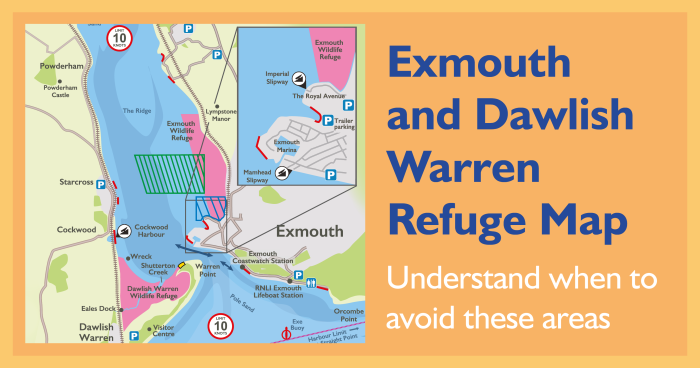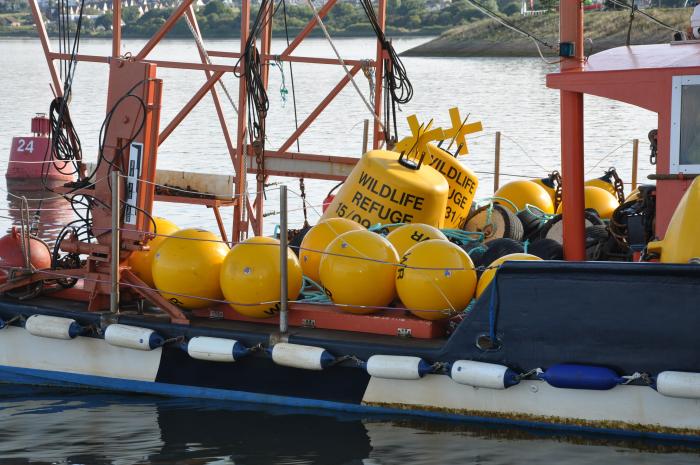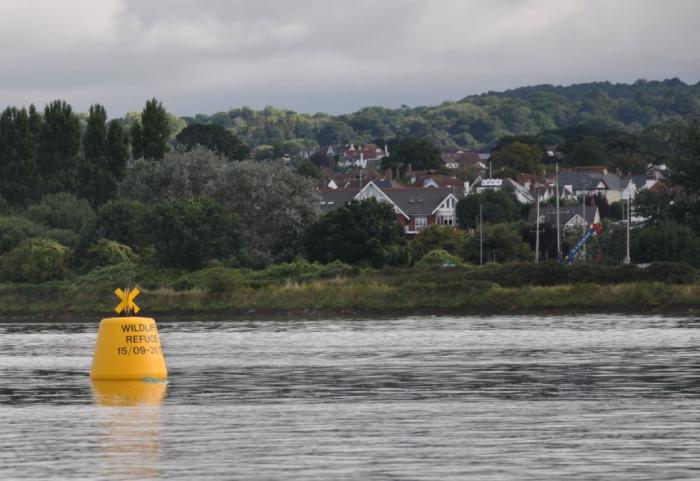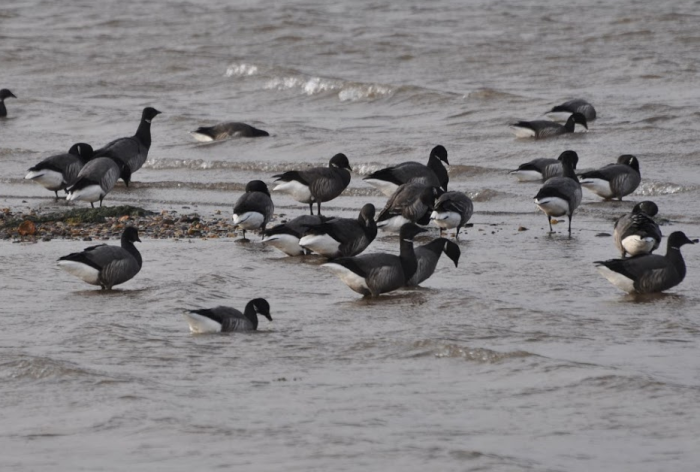Exe Wildlife Refuges – Created so birds can rest and feed undisturbed
Launched in 2017, the Exe Wildlife Refuge scheme recognises two areas within the estuary as being specifically important for resident and over-wintering birds

Dawlish Warren Wildlife Refuge

The Dawlish Warren Wildlife Refuge protects an area of saltmarsh, inter-tidal mudflats and the most important high-tide roost on the lower estuary. At low-tide, when the mudflats are exposed, the Refuge provides rich feeding grounds for waders and wildfowl, including Curlew, Redshank, Bar-tailed Godwit and Greenshank. At high-tide, Oystercatcher, Dunlin, and Grey Plover, find shelter on ‘hide island’ and ‘finger point’.
To ensure that birds are able to rest and feed in this area undisturbed, we ask that everyone avoid entering the Dawlish Warren Refuge all year round, at all tidal states.
Birds rely on a safe space to rest at high-tide when their food source is unavailable. The closer this is to their source of food, the better for conserving energy, especially during the cold winter months.
Please see signs on site to help you understand this protected conservation area.
Exmouth Wildlife Refuge

The Exmouth Wildlife Refuge protects a large eelgrass (Zostera spp.) bed on mudflats within Exmouth Local Nature Reserve, stretching from the Duck Pond, up towards Lympstone. Eelgrass is the main food plant for over-wintering species such as Dark-bellied Brent Geese and Wigeon, and is the most nutritionally dense food these species can consume.
To ensure that birds are able to access these winter feeding grounds undisturbed, we ask that everyone avoid entering the Exmouth Refuge between September 15th and December 31st at all tidal states.
To access the foreshore from the Imperial Recreation Grounds during Refuge season, please use the slipway, heading straight out or turning left at the bottom of the ramp. Please see signs on site to help you understand this protected conservation area.
Migratory birds need to rest and refuel when they arrive at their wintering grounds, they spend their time here building up energy-reserves for migration and to ensure they are at their fittest for the breeding season. If they are not well rested and fed, they may not have the energy to breed successfully, leading to population decline.

Some human activities can disturb birds from their natural behaviour. Sadly, we often cause bird disturbance without even realising.
It's difficult to advise a safe distance to observe shore birds - the proximity at which disturbance occurs depends on a number of factors - whether there is a history of disturbance at that site, on flock size and species, acclimatisation and weather conditions all contribute to how tolerant flocks are.
Before birds take flight, signs they are stressed about your proximity can include:
- they will stop feeding, or become alert if previously resting, and all look in the direction of the preserved threat
- alarm calls from individuals or an increase in volume across the flock
- swim or if on the shore, move away
- once distance between you and them becomes too little they will take flight as a last resort.
When birds are disturbed, they stop feeding or resting and may even fly away. Over time, with repeated disturbance, the energy lost can affect their fitness and survival.
